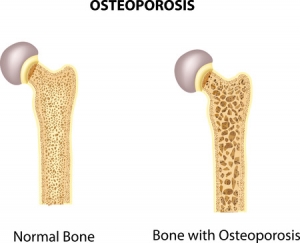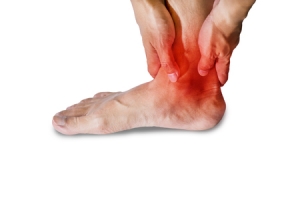Connect With Us
Blogs
Displaying items by tag: fracture
Stress Fractures May Signal Osteoporosis
Osteoporosis causes a bone fracture in one out of every two women and one out of every four men over the age of 50. Since May is National Osteoporosis Month, we at Superior Foot & Ankle Care Center think this is a good time to talk about this disease, which can have a big impact on the health of your feet.
Although stress fractures can occur due to trauma, accidents or overuse from an exercise or sport, they can also be the sign of weak bones.
What Causes Osteoporosis
Osteoporosis occurs when you lose too much bone, make too little bone or both. Many patients don’t realize that bone is living tissue that is constantly being torn down and built up. There are many conditions and factors that can result in loss of bone strength. These include:
- Age—your risk increases over the age of 50
- Sex—women have a higher risk, particularly post-menopausal women
- Ethnicity—Latinos, Asian Americans and African Americans are more at risk
- Disease—osteoporosis is often associated with other disease, such as diabetes, lupus and rheumatoid arthritis
- Family history of osteoporosis
If you are experiencing symptoms such as pain, tenderness, swelling, bruising or difficulty bearing weight on the affected foot, it’s important that you not put off getting these symptoms evaluated. Make an appointment at our Long Beach office so that our podiatrists, Dr. Victoria M. Foley or Dr. Constance Ornelas can examine your foot and diagnose the problem and its cause. The foot doctor can help determine your personal risk for osteoporosis and whether or not bone density or other tests should be ordered at this time.
Making Choices for Healthy Bones
Fortunately, there are many ways you can help increase bone strength and lower your risk for fractures, such as:
- Get enough calcium—know how much you should be getting each day and increase your intake of s of yogurt, milk, cheese, leafy greens and other foods that are high in this nutrient. Be sure to also get adequate amounts of vitamin D as this is essential for body to absorb calcium properly.
- Exercise regularly—weight-bearing and muscle strengthening build stronger bones. In general, being active can reduce your risk for decreased bone strength.
- Don’t smoke.
- Fall-proof your home inside and out.
Being educated is your best defense against osteoporosis. Have more questions? Contact us at: (562) 420-9800.
Are You Plagued by Weak Ankles?
Do you constantly feel like your ankle is going to “give out?” Does walking on uneven surfaces, in high heels or stepping off a curb frequently cause your ankle to turn? If so, you may be suffering from chronic ankle instability, a condition that we at Superior Foot & Ankle Care Center know many patients find very frustrating.
Causes of Wobbly Ankles
In nearly all cases, at the root of a weak ankle condition is a previous ankle injury or problem. Common sources include:
- One or more ankle sprains
- Scar tissue formation following a sprain
- Fracture in the ankle joint bones
- Arthritis or other inflammatory condition of the ankle joint, tendons or joint lining
- Nerve damage in the ankle area, such as stretching, tearing or pinching of the ankle nerves
Sometimes patients fail to complete the full course of rehabilitation for an ankle injury. Physical therapy and other treatments are geared toward healing the overstretched ankle ligaments and also strengthening the muscles that surround the ankle. When the pain stops, that’s when a patient stops therapy. Unfortunately, that doesn’t mean the ankle is fully healed. Going back to normal activities can lead to another sprain because the ankle is still weak. The more injuries, the weaker the ankle becomes.
Breaking the Cycle
The first step is getting your ankles evaluated. Our podiatrists, Dr. Victoria Foley or Dr. Constance Omelas will examine your ankles and feet. The foot doctor will also ask questions about previous injuries, your medical history and recent activities. Digital x-rays (which can be done right in our Long Beach office) and/or other imaging studies may also be ordered to help get a clear picture of the condition of the ankle bones and joints.
Depending on the cause and extent of the ankle damage, a treatment plan will be developed which may include:
- Anti-inflammatory or steroidal medications prescribed on a temporary basis to decrease swelling
- Ankle braces or supports
- Immobilizing the ankle area if there is a fracture that needs to heal
- Physical therapy to strengthen and improve range of motion for ankle muscles
If you have weak ankles, don’t wait to get treatment. Contact us today by calling (562) 420-9800.


